Bathtub Beauty: 1949 Packard Sedan
Unlike most other independent auto manufacturers, Packard survived the Depression by introducing a lower priced line of cars, the 120 model, in 1935. As many historians have noted, while this was a good, or even great short-term survival strategy, it had the paradoxical effect of diminishing Packard’s hard-won reputation as a luxury car built to the highest standard.
In 1941, the company continued on this path by introducing the Dutch Darrin-designed and very successful Clipper model. After World War II, the Clipper was continued, and in a further nod to cost saving, the larger “senior” Packards were actually built on the same frames, with larger engines, higher-quality materials, and a longer front end. Like every other manufacturer, Packard was able to sell every car it built during the immediate post-war period, further masking the deleterious effects of this more standardized approach to selling luxury cars.
As an independent, Packard’s resources were limited, and its 1948-1950 models were essentially carry over designs, with changes below the beltline to modernize and eliminate the traditional pre-war fender lines. These cars became known as the “bathtub” Packards, and in fact were quite popular when they were new, and they have a strong following among Packard collectors today.
The “lesser” 1949 Packard Standard and Custom models were equipped with the 288 cubic inch L-head straight eight engine, making 135 horsepower and rode on a 120-inch wheelbase, while the Super came with the huge 327 cubic inch eight that produced 150 horsepower on the longer 127-inch wheelbase.
Growing up in the fifties and sixties, I saw many of these bathtub Packards on the roads in our town, and got to ride in one frequently as a kid, as one of my schoolmates’ family owned one of these cars for many years. It was very comfortable to ride in and had so much room in the back seat that you could almost feel like you were in a room instead of a car – plenty of space for playing in, and of course, in those days, no seatbelts to get in the way.
These cars were as prone to rust as any others, so it is relatively rare to see a clean survivor these days. While the photos in the ad for this 1949 Packard Standard Eight for sale on craigslist in East Haven, Connecticut, are a bit fuzzy, it is claimed to be a low mileage survivor and looks amazingly solid both inside and out.
Packard somewhat famously used the series designation over and above model years to identify its cars. Therefore, early 1949 cars are 22nd Series models, while later year cars are designated as 23rd Series, and you’d most likely have to consult serial numbers to determine which series this car was in. My limited research into 1949 Packards indicates that the tail lights were more oval for the 23rd series cars, and this Packard at least appears to be one of those. Perhaps one of our more knowledgeable readers will be able to say for sure.
The seller of this car states that it has been driven under 41,000 miles and was in a car collection, though no information about where and for how long it was stored is provided. Except for a few flaws, like the vinyl on the lower door cards, and some evidence of moisture damage, the interior appears to be in fantastic condition.
This Packard appears to be equipped with the standard manual transmission. Packard is the only independent manufacturer to have developed its own automatic transmission, the excellent “Ultramatic,” which was introduced in the 23rd series 1949 Packards.
Based on the photos, the interior appears to be amazingly original, though it’s hard to imagine that the carpets have not been replaced at some point. The chrome also looks to be in exceptionally good condition for the age of the car. It’s impossible to determine from photos whether the paint is original, and the seller says little about the car other than that it is in “very good shape,” so if you are interested in buying this car, you will want to spend some time going over it. If the body has not had rust repair and does not need major mechanical work, this car will be well worth the asking price of $8000. According to Hagerty’s value guide, $7,600 is the average value for a 1949 Packard in “good” condition, and this car does appear to be in somewhat better than just good condition, much closer to excellent, where the valuation is $14,000. This seems like a lot of car for not too much money, and a relatively inexpensive way to become an owner of somewhat rare and fine old car.
If this car checks out, and you have a large enough garage, and can afford to own and maintain this car, you could do a lot worse than to own a Packard of this vintage. It’s a beautiful example of American engineering and will provide enjoyable driving for its next owner.
Auctions Ending Soon
 2006 Ford Mustang Saleen S281 SCBid Now5 hours$16,000
2006 Ford Mustang Saleen S281 SCBid Now5 hours$16,000
 2002 Subaru Impreza WRXBid Now3 days$333
2002 Subaru Impreza WRXBid Now3 days$333
 1975 Chevrolet Corvette ConvertibleBid Now3 days$3,000
1975 Chevrolet Corvette ConvertibleBid Now3 days$3,000
 1964 Ford F-100 Camper CustomBid Now3 days$2,000
1964 Ford F-100 Camper CustomBid Now3 days$2,000
 2006 Jeep Wrangler SportBid Now5 days$10,500
2006 Jeep Wrangler SportBid Now5 days$10,500
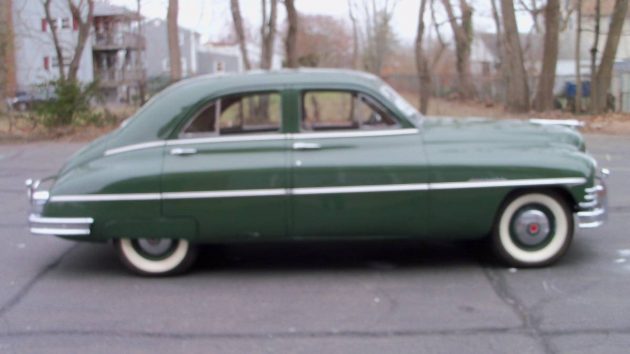


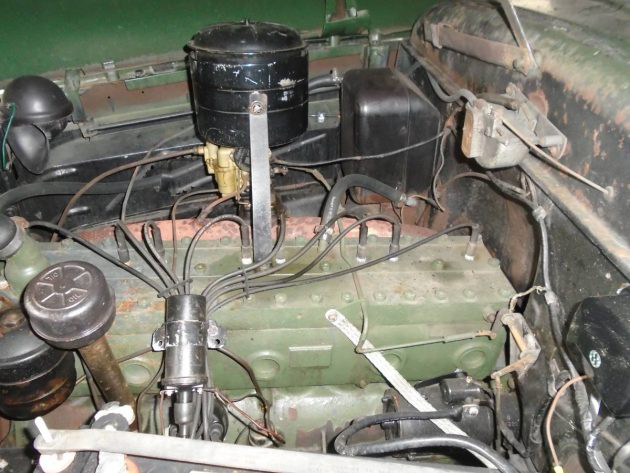


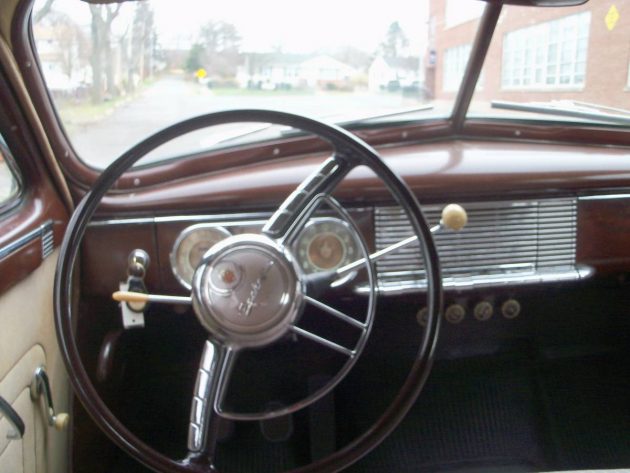

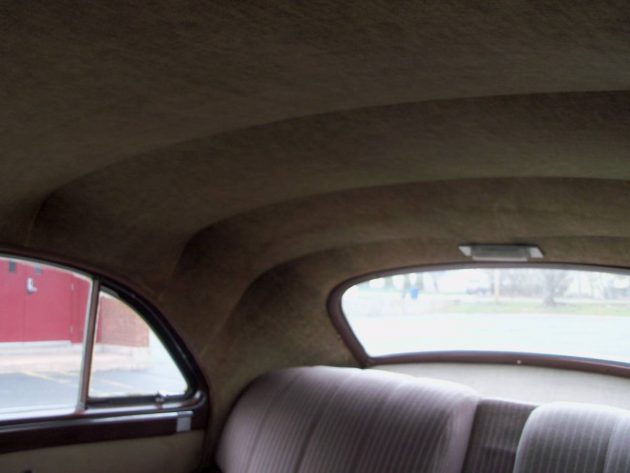
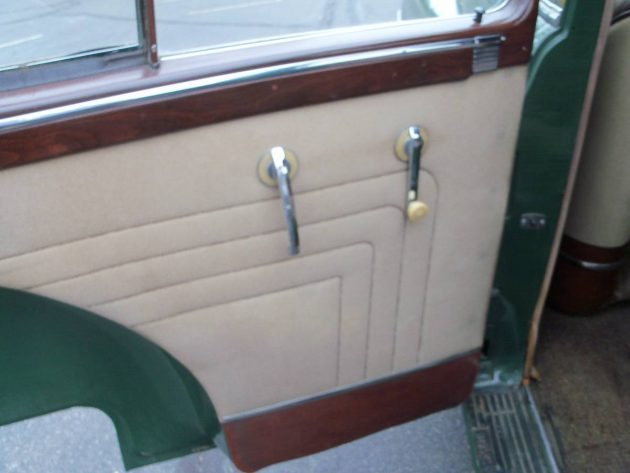
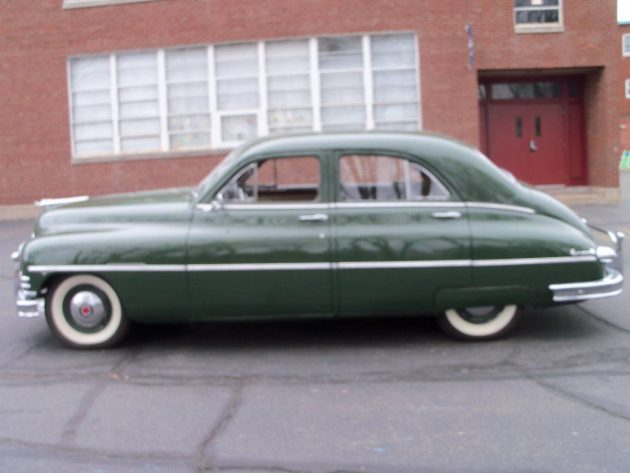

Comments
Stop me if you’ve heard this one,,,,This car is very similar to my grandfather’s 1948, he bought brand new. It cost $2808. After cleaning out his house when he died, we found the bill of sale. He got 3(that I remember) options, radio, outside rear view mirror( yes, that WAS an option) and the Cormorant hood ornament. His had the “electro-matic ” clutch, which I don’t see here, I thought that was standard. This car is pretty basic, but still very nice compared to Ford or Chevy ( and twice the price) for the time. He drove that car until a bus cut him off ( so the story goes) in 1961, and it was totaled. He took the hood ornament, mirror and radio out, and they sat in his basement for years,,,
Fast forward to 1980. Grandpa passed away around that time, and my old man found a 1950 Standard 8 ( I think this is a Custom 8, they had so many styles then) that was sitting in a backyard, outside, on blocks SINCE 1959!!! Apparently, the widows husband parked it in 1959 when he refused to pay more than .25 cents/ gallon. It also had 40K miles. We paid $500 bucks for it. It had the 288, but was an automatic. I must disagree with David, yes, it was one of the 1st automatics, but it was a poor one. It was dependable, after all, it was a Packard, but I think it was a 2 speed in D, but another gear for low, and was not meant for fast starts ( if any) and many were burned out because of it. Over the years, I had a total of 4 Packards ( 2, I bought for $300 just to get the visor, I forget where the other one came from, but they were around) We dismantled all the cars, except the good one. We had that Packard almost 30 years, with grandpa’s Cormorant leading the way, but the amateur restoration had begun to deteriorate, and it sat in my brothers barn in disrepair. We sold it in 2010 for $3,000 and needed a lot, but the young man was very excited to get it, as we were, 30 years prior. He asked if we had the hood ornament, but it was not for sale. While some may scoff that this isn’t a real Packard, let me tell you, get this tank rolling 80 mph, you’ll change your mind. It was Packard all the way.
Howard-since I have never owned nor even driven a Packard with Ultramatic, my description of it was based on research and may not be accurate. It seems to have gotten good reviews overall but had problems with the first to second transition, and Packard lacked development funds to improve it enough over its short lifetime. Here is a summary from Wikipedia: “In retrospect Packard’s Twin Ultramatic’s most serious design flaw was during the low to high shift transition where a poorly timed high clutch application and low band release over much of the allowable upshift range resulted in many premature high clutch failures. This situation resulted in an unusual sensitivity to individual driving habits determining useful clutch life. Therefore while this transmission was certainly designed to physically accept a high torque V8, its control system likely needed another year of development.”
It seems that there has been some effort in the sixty years since Packard’s demise to improve these transmissions. I’d love to get the chance to drive one at some point. David
Plus, it sucked up a lot of power. It must have been a good transmission, because, after I got the engine free and started, it still worked, although, sometimes, I had to put it in neutral at a stop, or the motor would kill. When we got the car, I didn’t realize how rare the car was, 1950 was the 1st year for the Ultramatic, and the guy that bought my car new, went for it. A pretty bold move for 1950. He was probably disappointed, as the 3 speed with electro-matic clutch and O/D was the way to go. My dad remembered riding in my grandfathers and ol’ grandpa had the needle up there. ( or so the story went)
Just an aside, this brings up why the TurboHydramatic was always a better trans than the Mopar and Fords auto’s – the TurboHydro upshifts by applying the next clutch, it does not have to release one as the others do, so there is no timing issue between them.
Hi Howard, the original Ultramatic, as introduced in 1949 it started in hi when in Drive. Low gear had to be manually selected. The torq converter had a lock up feature. That is what was felt as a gear shift to Hi. The 54 models gained shifting capability so the car started in Low. This was marketed as “Gear Start Ultramatic”. The automatic was reliable but contributed to slow starts and poor gas mileage. 55 was the introduction of the ill fated “Twin Ultramatic”. The Twin had a poorly timed shift from low to hi that caused failures. The torq converter continued on with a lockup device. The Twin Ultra came about due to the new v8’s higher power. Some say the Twin Ultra was more reliable with the smaller 320cid engine.
The mechanicals for this car are fairly available so maintaining it should not be difficult. Strong Packard Club support, very comfortable, great street presence and a bargain to buy.
“Ask the Man who Owns One”
https://capecod.craigslist.org/cto/6099499588.html
here is a 49 Packard Eight Deluxe barn find in the North East too
Some corrections in the narrative: 22nd Series produced in ’48 and 1st half of ’49. 23rd Series produced 2nd half of ’49 and all of ’50. The Custom was the top of the line, and had a 356 ci displacement engine. Next was the Super with a 327 ci engine. The least expensive was the Deluxe (may have been called the Standard Deluxe) with a 288 ci engine.
Michael- thanks for the correction on Packard models which definitely confused me. I think I did state the series correctly, early 49 cars are 22nd series, but I did leave out the fact that 1948 cars are as well and that 23rd series extended to 1950. That’s part of the confusion Packard created with their use of series designation over yearly models. This particular Packard is a base model car but as Howard said, was still pretty special. David
Some features included, double hinge hood, raise r or l, or off altogether, glowing instruments at night. The needles and numbers were that green phosphorous stuff and a black light, the “whistling gas filler”, which was actually kind of embarrassing, as you filled the tank, the filler made a whistling sound, and would stop when the tank was almost full. No auto shutoffs then. You stepped on the gas pedal( to the floor) to engage the starter. Just the thing for a hot flooded motor. The electromatic clutch was neat. When activated,( switch on dash) you’d let off the gas, through a series of switches, engine vacuum would suck the clutch pedal down, you’d shift the car as normal, apply the gas, and the clutch would engage. It worked surprisingly well. Dual action fuel pump, which kind of helped the wipers. Heater sucked, but it was a hot car (inside) anyway. Be advised, at shows, I got “is that a Hudson?” No, “a Studebaker”? No, a Packard ( blank stare) “What’s a Packard”? They’d say.
I’m surprised people knew what a Hudson was and not what a Packard was!
My folks had a 1960 Buick and the starter worked the same way – by flooring the gas pedal. WTH good is that if you need to pump the gas or something? You can’t crank the engine unless the gas is floored.
And another thing,,,,I never cared for the “pregnant elephant” or “bathtub” monikers associated with this car. Maybe I’m being partial, and by the early 50’s, this style was dated, but for the late 40’s, I thought it was a nicely styled car, on par with any of the other “bathtubs” of the day. Packard was riding high after the war, and I’m sure that’s the reason my grandfather bought one. Considering their contributions to the war, he was proud to drive a Packard. Sad in 10 years, that wouldn’t hold water anymore, and Packard, for a multitude of reasons, faded from the scene.
Where’s Woodie Man, here’s your car, dude.
I remember a Packard of this series being driven around. It was tan and I always associate that color with the elegance of Packards.
Today, those that design our modern day cars would do well to study the simple,
tasteful elegance of the 48-50 Packard, ;no reason modern safety packages could not be incorporated into this type of body style. Yet, I know it probably would only please foolish old farts , like me.
They are a joy to behold gliding along the highways, though.
This is my dream car!! I’d trade a 78 LTD and a 75 Caprice convertible to have this in my garage. One day I will be driving one of these bathtub beauties!!!
Some corrections are in order here.
The base Packard model for 48 – 50 years was the Standard 8. The easiest way to tell if it’s a Standard 8 is to look at the back seat. if it’s got a center armrest it’s a Deluxe or Super. It has the 288 cu in motor.
Next in line is the Deluxe 8. Has a center rear armrest! Same motor, slightly better interior trim.
Then we have the big changes with the Super 8 cars; They look about the same outside, but the belt line trim at the base of the windows extends forward around to the wiper bases, and also the other direction, about 15 inches down the side of the trunk lid. Interior has an upgraded material, and button tufting. It also has chrome trim pieces on the door cappings. The motor is the 5 main bearing 327 cu in.
The top of the line Packard was the Custom series. That is the car with the longer front fenders & hood. Needed because of the monster 356 cu in straight 8 engine, the one with 9 main bearings. The grill is different, and is referred to as the “egg crate grill”. Also has a grill below the trunk lid, and the belt line trim extends all the way around the lower edge of the trunk lid.
The interior of the Custom 8 is 100% wool broadcloth, in one of 4 colors: Tan, burgundy, dark blue or dark green. But the big interior change is the headliner. The ribs don’t go from side to side, but from front to rear. Sitting in the back seat, the car seems about 3 feet longer!
The car featured here is a Super 8 sedan, with the 327 engine. It’s interesting to note that while all 3 engines are different, [the 288 & 327 having different bore/stroke], the cylinder heads interchange & share the same head gasket!
The car does not have overdrive, that’s very unusual for a Super 8 to not have either overdrive, or the automatic clutch, known as the Electromatic clutch. It also does not have a radio & has the basic hood ornament, but it has the optional deluxe bumper over riders. The car is also lacking the side trim on the trunk lid, that suggests the lid was replaced at some time*, so I suspect the paint is not original. [It’s not the right color anyway – but because you could order a Packard in almost any color at that time, it’s still possible it’s original. But I don’t think so.]
*Because the Super had the side trim on the trunk lid, water tended to gain entry into the trunk lid edge seam and rot the bottom edge. The lesser cars without the side trim holes didn’t have the problem.
Nice post Bill, and greatly appreciate this information. The seller thinks he has a Standard 8, and I clearly don’t know enough about these cars to know the difference. I think that it is a Super 8 with the bigger engine makes it a bit more interesting, don’t you think? Certainly it will have more power, though perhaps without the overdrive, it will be working harder at higher speeds. East Haven is not far from me so maybe I will take a look at this car over the weekend….
David
Thanks for the info, Bill. I remember, one of my “parts cars” ( that probably would have been restored today) had a bigger motor and change over to automatic, cobbled into the Standard 8 car. It had “Thunderbolt” on the head (327?) and the rear of the motor was almost tight agin the firewall, and the radiator was moved a few inches forward. I read it also had a redesigned steering geometry, and for manual steering, it was remarkably easy to turn. Brakes? Well, that’s another story. The drum brakes were ,,adequate. This was a heavy car, over 4,000lbs. and probably not adequate for todays driving, but remember, this car ran down gravel 2 lanes, for the most part, and for that they worked fine.
Known as “Pregnant Elephants”.